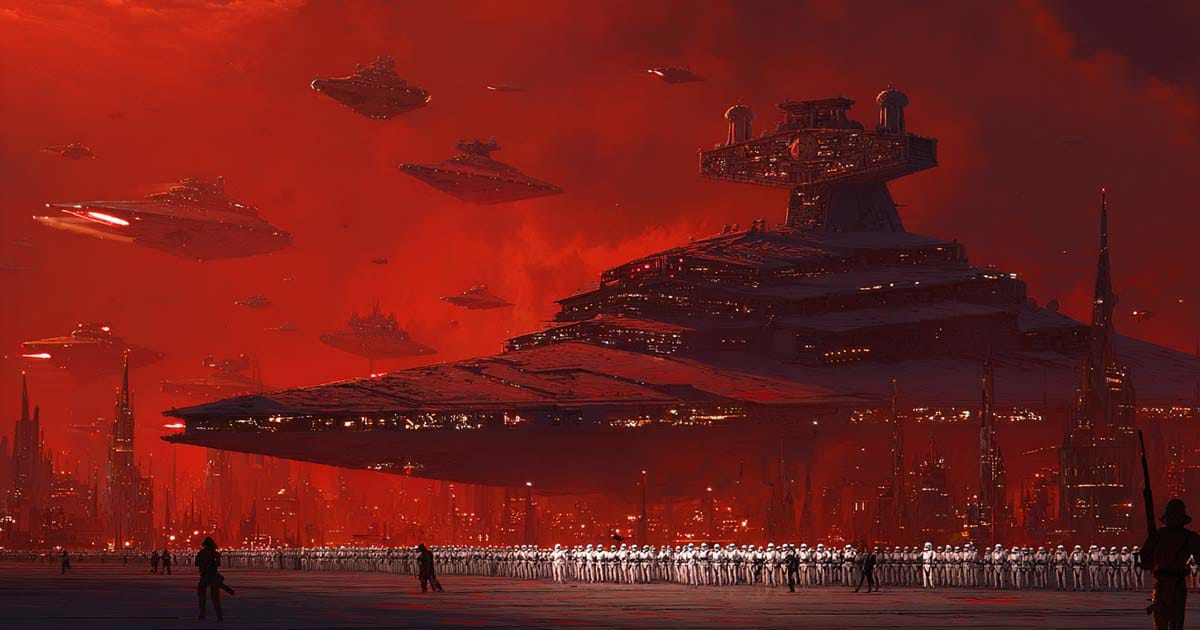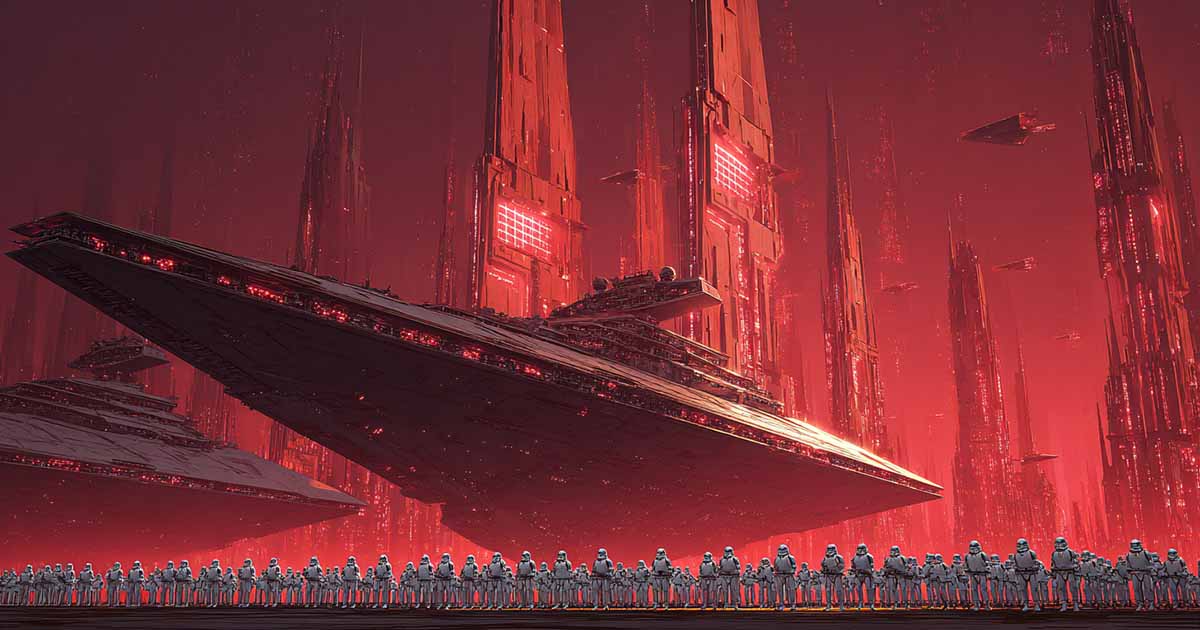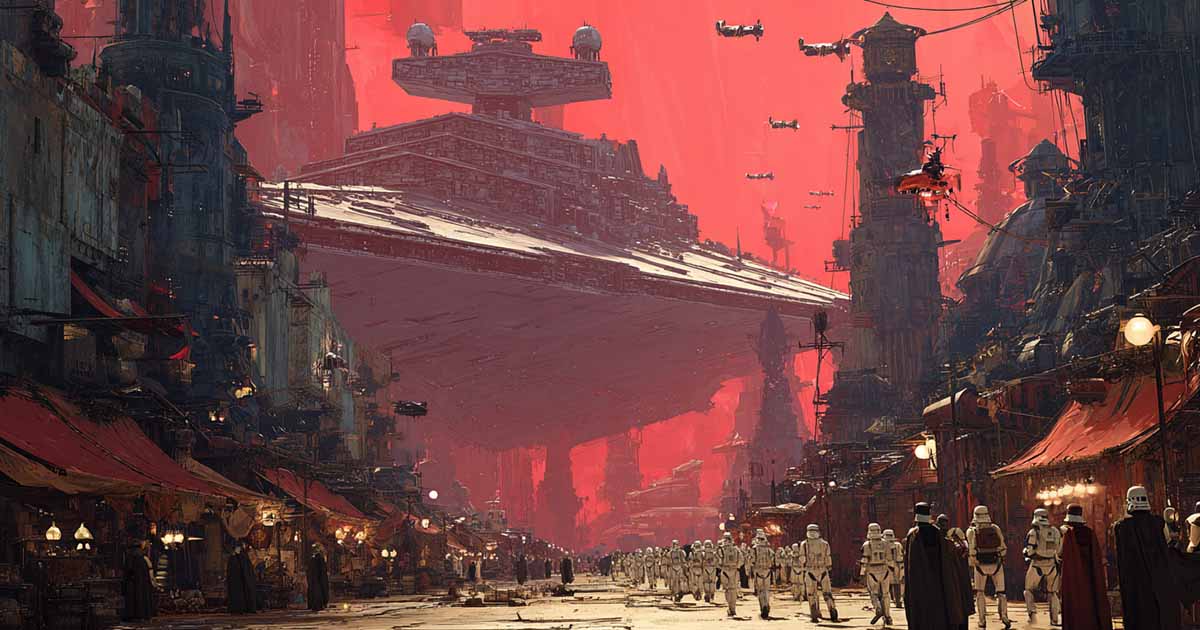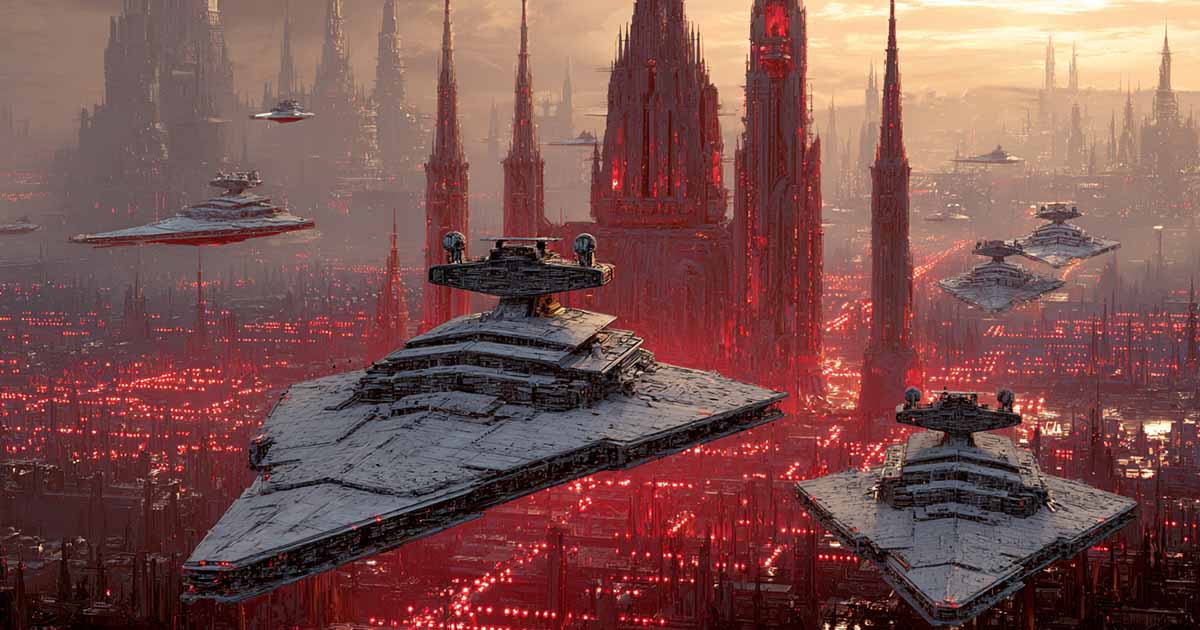What is the Galactic Empire?
The Galactic Empire in "Star Wars" is a galaxy-spanning dictatorship led by Emperor Palpatine, defined by its vast military power, authoritarian rule, and downfall after Endor and Jakku.

Galactic Empire (Star Wars)
The Galactic Empire is the authoritarian regime at the center of the "Star Wars" saga. Introduced in George Lucas’s 1977 film "Star Wars," the Empire serves as the primary antagonist, exercising control over the galaxy through political domination, overwhelming military might, and instilling fear.
Origins and Rise
The Galactic Empire begins in the final years of the Galactic Republic. Supreme Chancellor Palpatine, secretly Darth Sidious, consolidates authority during the Clone Wars. By presenting himself as a defender of peace, he wins extraordinary emergency powers. When the Jedi are suspected of treason, Palpatine reorganizes the Republic into the First Galactic Empire. His speech to the Senate promises security and stability, but it marks the end of self-government and the beginning of tyranny.
Government and Leadership

At the top of the hierarchy stands the Emperor. Palpatine rules without checks on his power, supported by governors called Moffs who oversee sectors of the galaxy. For a time, the Imperial Senate continues as a symbolic body, but it is eventually dissolved.
The Empire centralizes its government on Coruscant, renamed Imperial Center. Surveillance, censorship, and propaganda become tools of rule. Regional officials enforce loyalty through fear, ensuring the Emperor’s authority reaches even the farthest star systems.
Military Power
The Imperial military defines the Empire. The Imperial Navy, with its massive fleet of Star Destroyers, dominates space. On the ground, stormtroopers enforce Imperial control and serve as a visible reminder of authority.
The Empire also develops superweapons. The most notorious is the Death Star, a battle station capable of destroying entire planets. Grand Moff Tarkin explains in "Star Wars" that the Death Star is not only a weapon but a tool of intimidation. By making rebellion seem futile, the Empire hopes to prevent uprisings before they begin.
Society Under the Empire

Imperial rule strips away individual freedoms. Speech, assembly, and local autonomy vanish under the promise of stability. Human citizens dominate positions of power, while many alien species face systemic prejudice.
This climate of oppression fuels discontent. While the Empire boasts of order, its control relies on intimidation and fear. That combination creates the conditions for rebellion, setting the stage for the Galactic Civil War.
When Was the Galactic Empire Founded?
The Galactic Empire was founded in 19 BBY(Before the Battle of Yavin), during the conclusion of the Clone Wars. Palpatine uses the crisis to justify his permanent rule, transforming the Republic into an empire.
Why Did the Galactic Empire Fall?

The Rebel Alliance rises as a coalition of resistance groups united against Imperial oppression. The destruction of the first Death Star during the Battle of Yavin demonstrates that the Empire is not invincible.
The second Death Star’s destruction at Endor, along with the deaths of Palpatine and Darth Vader, delivers the decisive blow. Without central leadership, the Empire fragments into rival factions. The final defeat comes with the Battle of Jakku in 5 ABY (After the Battle of Yavin), where the New Republic secures victory and forces the Empire to sign a surrender.
Legacy in Science Fiction
The Galactic Empire endures as one of the most recognizable villains in science fiction cinema. Its sleek warships, masked stormtroopers, and ruthless leaders define the image of galactic tyranny.
The Empire illustrates how societies can lose liberty in pursuit of security. It demonstrates how strong leadership in times of crisis can become a lasting legacy, and how fear can shape an entire civilization. These themes ensure the story of the Empire’s rise and fall remains relevant for audiences.

